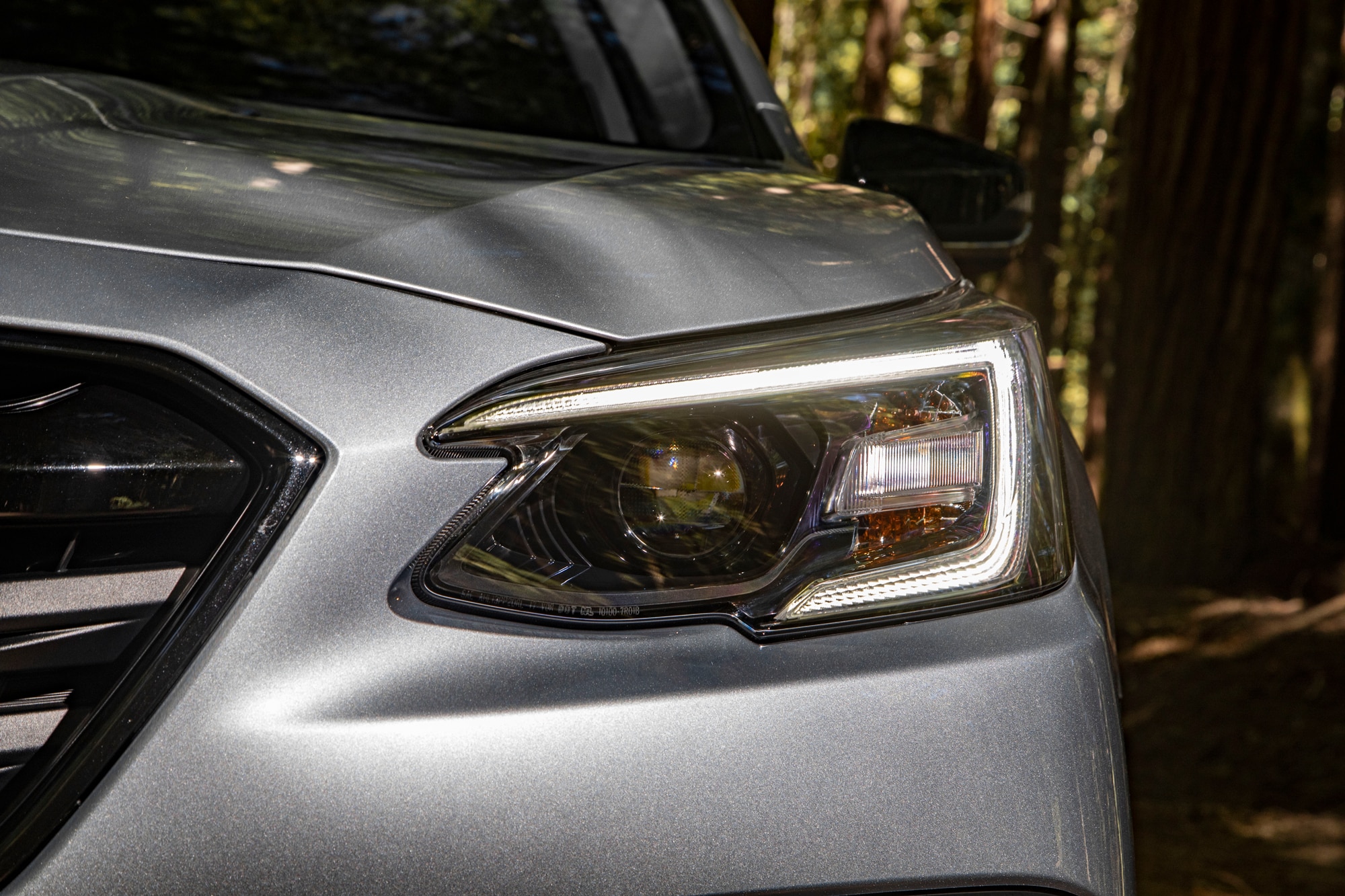What Is Subaru EyeSight?
Subaru’s suite of driver-assistance features uses two forward-facing cameras.
 Subaru
Subaru
Subaru’s EyeSight is a collection of driver-assistance and safety features, with the name playing on the fact that the system relies on a pair of front-facing cameras that sit on either side of the rearview mirror. These cameras process visual information from the front of the car to enable adaptive cruise control, lane-keeping assistance, pre-collision braking, and throttle management. Many other automakers use a radar sensor in conjunction with a single camera for these functions, although drivers likely won’t notice a difference in how Subaru’s systems operate.
Subaru EyeSight has three primary features
Adaptive cruise control (ACC) keeps a vehicle at a set distance from the car in front of it. Subaru also offers advanced ACC on some models, which helps center the car in its lane while keeping a safe distance from other vehicles.
Lane-keeping assistance tracks painted lane markings to know if the car is drifting out of its lane. If the system detects the driver moving close to the edge of the lane without signaling, it will first beep at the driver and then apply a subtle steering correction to keep the vehicle in the lane.
Pre-collision braking, also known as automated emergency braking, and pre-collision throttle management both work to prevent the car from hitting something in front of it. Pre-collision braking can apply full braking force in an emergency situation, while throttle management will attempt to slow the car down if a collision is imminent.
Any advanced driver-assistance system that covers the sides or rear of the vehicle is considered separate, and may not be included as standard on EyeSight-equipped vehicles. For example, the base trim of the 2022 Forester SUV starts at $26,370 and includes EyeSight. But to get blind-spot detection and rear cross-traffic alert, you would need to choose the Forester Sport, which starts at $30,940.
Which Vehicles Offer Subaru EyeSight?
EyeSight safety technology is standard on the following 2022 Subaru models: Forester, Legacy, Outback, Ascent, and automatic-transmission versions of the BRZ. It is available on some trims of the 2022 Impreza, Crosstrek, and WRX, where it requires choosing the optional continuously variable transmission — that’s a $1,350 option in the Crosstrek or a $1,300 option in the Impreza. (WRX pricing was unavailable at the time of writing.)
Does Subaru EyeSight Improve Safety?
Based on information from the Insurance Institute for Highway Safety (IIHS), which looked at data from model year 2013–2015 Subarus, the automaker claims that having EyeSight installed can reduce the rate of rear-end crashes with injuries by up to 85%. IIHS also found that using EyeSight can reduce pedestrian injuries by up to 35%.
Subaru introduced EyeSight as an option for 2013 Outback and Legacy vehicles. That first system used black-and-white cameras, but color cameras have been the norm since the 2015 model year. Current EyeSight cameras also can see wider angles and farther ahead than their predecessors could.
Written by humans.
Edited by humans.
 Sebastian Blanco
Sebastian BlancoSebastian Blanco has been writing about electric vehicles, hybrids, and hydrogen cars since 2006. His first green-car media event was the launch of the first Tesla Roadster in 2006, an event where he almost elbowed Arnold Schwarzenegger in the groin. Since then, he has been tracking the shift away from gasoline-powered vehicles and discovering the new technology's importance not just for the auto industry, but for the world as a whole.
Related articles
View more related articles